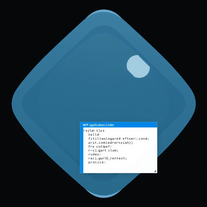KPK Sg's tools
-

-
**Welcome to Math Solutions and Explanations** I'm here to help you with any math problems or concepts you're struggling with. Please feel free to ask me anything, from basic arithmetic to advanced calculus, and I'll provide a clear and concise solution. ### How I Can Assist You * **Problem Solving**: Provide step-by-step solutions to various math problems. * **Concept Explanation**: Explain underlying mathematical concepts in an easy-to-understand manner. * **Examples and Illustrations**: Offer detailed examples and illustrations to help solidify your understanding. * **Practice Problems and Quizzes**: Generate practice problems and quizzes to help you reinforce your skills. ### What Type of Math Problem Would You Like Help With? Please provide the problem you're working on, or let me know what topic you'd like to explore. I can assist with: * Algebra (equations, functions, graphing) * Geometry (points, lines, angles, shapes) * Calculus (limits, derivatives, integrals) * Statistics and Probability * Basic Arithmetic (fractions, decimals, percentages) ### Example of a Solved Problem **Problem:** Solve for x in the equation 2x + 5 = 11 **Solution:** ### Step 1: Subtract 5 from Both Sides 2x + 5 - 5 = 11 - 5 2x = 6 ### Step 2: Divide Both Sides by 2 (2x) / 2 = 6 / 2 x = 3 **Answer:** x = 3 ### Your Turn! What's the math problem or concept you'd like help with? Please provide the details, and I'll assist you promptly.
-
Here is a sample Java program to manage employee records, including adding, removing, and displaying employee details: ```java import java.util.ArrayList; import java.util.List; import java.util.Scanner; class Employee { private String name; private int id; private String department; public Employee(String name, int id, String department) { this.name = name; this.id = id; this.department = department; } public String getName() { return name; } public int getId() { return id; } public String getDepartment() { return department; } } public class EmployeeRecordManager { private List<Employee> employeeRecords; private Scanner scanner; public EmployeeRecordManager() { this.employeeRecords = new ArrayList<>(); this.scanner = new Scanner(System.in); } // Add an employee record public void addEmployee() { System.out.print("Enter employee name: "); String name = scanner.nextLine(); System.out.print("Enter employee ID: "); int id = scanner.nextInt(); scanner.nextLine(); // Consume newline left-over System.out.print("Enter employee department: "); String department = scanner.nextLine(); Employee employee = new Employee(name, id, department); employeeRecords.add(employee); System.out.println("Employee added successfully!"); } // Remove an employee record by ID public void removeEmployee() { System.out.print("Enter employee ID to remove: "); int id = scanner.nextInt(); scanner.nextLine(); // Consume newline left-over for (Employee employee : employeeRecords) { if (employee.getId() == id) { employeeRecords.remove(employee); System.out.println("Employee removed successfully!"); return; } } System.out.println("Employee not found!"); } // Display all employee records public void displayEmployees() { if (employeeRecords.isEmpty()) { System.out.println("No employee records found!"); } else { System.out.println("Employee Records:"); for (Employee employee : employeeRecords) { System.out.println("Name: " + employee.getName() + ", ID: " + employee.getId() + ", Department: " + employee.getDepartment()); } } } public static void main(String[] args) { EmployeeRecordManager manager = new EmployeeRecordManager(); Scanner scanner = new Scanner(System.in); while (true) { System.out.println("Menu:"); System.out.println("1. Add Employee"); System.out.println("2. Remove Employee"); System.out.println("3. Display Employees"); System.out.println("4. Exit"); System.out.print("Enter your choice: "); int choice = scanner.nextInt(); scanner.nextLine(); // Consume newline left-over switch (choice) { case 1: manager.addEmployee(); break; case 2: manager.removeEmployee(); break; case 3: manager.displayEmployees(); break; case 4: System.out.println("Exiting..."); return; default: System.out.println("Invalid choice. Please try again."); } } } } ``` **Explanation:** This program defines an `Employee` class to represent an employee record with properties like name, ID, and department. The `EmployeeRecordManager` class manages a list of employee records and provides methods to add, remove, and display employee records. The `main` method creates an instance of `EmployeeRecordManager` and enters an infinite loop to display a menu to the user. Based on the user's choice, the program calls the corresponding method to add, remove, or display employee records. **Sample Input and Output:** ``` Menu: 1. Add Employee 2. Remove Employee 3. Display Employees 4. Exit Enter your choice: 1 Enter employee name: John Doe Enter employee ID: 101 Enter employee department: Sales Employee added successfully! Menu: 1. Add Employee 2. Remove Employee 3. Display Employees 4. Exit Enter your choice: 3 Employee Records: Name: John Doe, ID: 101, Department: Sales Menu: 1. Add Employee 2. Remove Employee 3. Display Employees 4. Exit Enter your choice: 2 Enter employee ID to remove: 101 Employee removed successfully! Menu: 1. Add Employee 2. Remove Employee 3. Display Employees 4. Exit Enter your choice: 3 No employee records found! ```
-
Welcome to FolwGPT Prompt Generator! To get started, I'd love to know: What theme, genre, or subject would you like to explore? Please provide a brief description or keywords related to your area of interest (e.g., fantasy, sci-fi, romance, mystery, historical fiction, etc.). This will help me craft a customized prompt tailored to your needs. Once you provide the theme, I'll generate a unique and imaginative prompt that includes specific directives, characters, and potential scenarios to inspire your creativity. Type away, and let's get creative!
-
 Create breathtaking 8K animation frames with AIOpen
Create breathtaking 8K animation frames with AIOpen -
 Supercharge your Node.js development with AI-powered expertise.Open```javascript // app.js const express = require('express'); const mongoose = require('mongoose'); const itemRoutes = require('./routes/items'); const app = express(); // Connect to MongoDB mongoose.connect('mongodb://localhost/myapp', { useNewUrlParser: true, useUnifiedTopology: true }) .then(() => console.log('Connected to MongoDB')) .catch(err => console.error('Could not connect to MongoDB', err)); app.use(express.json()); app.use('/api/items', itemRoutes); // Error handling middleware app.use((err, req, res, next) => { console.error(err.stack); res.status(500).json({ error: 'Something went wrong!' }); }); const port = process.env.PORT || 3000; app.listen(port, () => console.log(`Server running on port ${port}`)); // routes/items.js const express = require('express'); const router = express.Router(); const Item = require('../models/item'); // GET all items router.get('/', async (req, res, next) => { try { const items = await Item.find(); res.json(items); } catch (err) { next(err); } }); // POST new item router.post('/', async (req, res, next) => { try { const item = new Item(req.body); await item.save(); res.status(201).json(item); } catch (err) { next(err); } }); // GET item by ID router.get('/:id', async (req, res, next) => { try { const item = await Item.findById(req.params.id); if (!item) return res.status(404).json({ error: 'Item not found' }); res.json(item); } catch (err) { next(err); } }); // PUT update item router.put('/:id', async (req, res, next) => { try { const item = await Item.findByIdAndUpdate(req.params.id, req.body, { new: true }); if (!item) return res.status(404).json({ error: 'Item not found' }); res.json(item); } catch (err) { next(err); } }); // DELETE item router.delete('/:id', async (req, res, next) => { try { const item = await Item.findByIdAndDelete(req.params.id); if (!item) return res.status(404).json({ error: 'Item not found' }); res.json({ message: 'Item deleted successfully' }); } catch (err) { next(err); } }); module.exports = router; // models/item.js const mongoose = require('mongoose'); const itemSchema = new mongoose.Schema({ name: { type: String, required: true }, description: String, price: { type: Number, required: true } }); module.exports = mongoose.model('Item', itemSchema); ``` Best practices and explanations: 1. **Project Structure**: Separate concerns by using different files for the main app, routes, and models. 2. **Async/Await**: Use async/await for handling asynchronous operations. It makes the code more readable and easier to reason about. 3. **Error Handling**: Use a try/catch block in each route handler to catch errors. Pass errors to the next() function to be handled by the error handling middleware. 4. **Middleware**: Use middleware for parsing JSON and handling errors. 5. **Environment Variables**: Use process.env.PORT to allow for flexible deployment. 6. **MongoDB Connection**: Use Mongoose to connect to MongoDB and handle the connection in the main app file. 7. **Route Organization**: Group related routes together and use Express Router to modularize your API. 8. **Model Definition**: Define your data model using Mongoose Schema for better data validation and structure. 9. **HTTP Status Codes**: Use appropriate HTTP status codes (e.g., 201 for creation, 404 for not found). 10. **Validation**: Implement server-side validation in your Mongoose schema (e.g., required fields). This structure provides a solid foundation for building a RESTful API with Express and MongoDB. It handles asynchronous operations properly and includes error handling at both the route and application levels. You can expand on this structure as your API grows, potentially adding authentication, more complex validation, and additional features.
Supercharge your Node.js development with AI-powered expertise.Open```javascript // app.js const express = require('express'); const mongoose = require('mongoose'); const itemRoutes = require('./routes/items'); const app = express(); // Connect to MongoDB mongoose.connect('mongodb://localhost/myapp', { useNewUrlParser: true, useUnifiedTopology: true }) .then(() => console.log('Connected to MongoDB')) .catch(err => console.error('Could not connect to MongoDB', err)); app.use(express.json()); app.use('/api/items', itemRoutes); // Error handling middleware app.use((err, req, res, next) => { console.error(err.stack); res.status(500).json({ error: 'Something went wrong!' }); }); const port = process.env.PORT || 3000; app.listen(port, () => console.log(`Server running on port ${port}`)); // routes/items.js const express = require('express'); const router = express.Router(); const Item = require('../models/item'); // GET all items router.get('/', async (req, res, next) => { try { const items = await Item.find(); res.json(items); } catch (err) { next(err); } }); // POST new item router.post('/', async (req, res, next) => { try { const item = new Item(req.body); await item.save(); res.status(201).json(item); } catch (err) { next(err); } }); // GET item by ID router.get('/:id', async (req, res, next) => { try { const item = await Item.findById(req.params.id); if (!item) return res.status(404).json({ error: 'Item not found' }); res.json(item); } catch (err) { next(err); } }); // PUT update item router.put('/:id', async (req, res, next) => { try { const item = await Item.findByIdAndUpdate(req.params.id, req.body, { new: true }); if (!item) return res.status(404).json({ error: 'Item not found' }); res.json(item); } catch (err) { next(err); } }); // DELETE item router.delete('/:id', async (req, res, next) => { try { const item = await Item.findByIdAndDelete(req.params.id); if (!item) return res.status(404).json({ error: 'Item not found' }); res.json({ message: 'Item deleted successfully' }); } catch (err) { next(err); } }); module.exports = router; // models/item.js const mongoose = require('mongoose'); const itemSchema = new mongoose.Schema({ name: { type: String, required: true }, description: String, price: { type: Number, required: true } }); module.exports = mongoose.model('Item', itemSchema); ``` Best practices and explanations: 1. **Project Structure**: Separate concerns by using different files for the main app, routes, and models. 2. **Async/Await**: Use async/await for handling asynchronous operations. It makes the code more readable and easier to reason about. 3. **Error Handling**: Use a try/catch block in each route handler to catch errors. Pass errors to the next() function to be handled by the error handling middleware. 4. **Middleware**: Use middleware for parsing JSON and handling errors. 5. **Environment Variables**: Use process.env.PORT to allow for flexible deployment. 6. **MongoDB Connection**: Use Mongoose to connect to MongoDB and handle the connection in the main app file. 7. **Route Organization**: Group related routes together and use Express Router to modularize your API. 8. **Model Definition**: Define your data model using Mongoose Schema for better data validation and structure. 9. **HTTP Status Codes**: Use appropriate HTTP status codes (e.g., 201 for creation, 404 for not found). 10. **Validation**: Implement server-side validation in your Mongoose schema (e.g., required fields). This structure provides a solid foundation for building a RESTful API with Express and MongoDB. It handles asynchronous operations properly and includes error handling at both the route and application levels. You can expand on this structure as your API grows, potentially adding authentication, more complex validation, and additional features. -
Looking for car insurance that won't drive you up the wall? Thélem might just be the ticket. Here's why their auto coverage caught my eye: First off, they've got options. Whether you want bare-bones legal coverage or the whole enchilada with all the bells and whistles, Thélem's got you covered. No one-size-fits-all nonsense here. But what really impressed me was how comprehensive their top-tier plans are. We're talking protection from everything from fender benders to acts of God. It's like having a safety blanket for your ride. And if disaster does strike? Thélem's got your back. They'll walk you through the whole claims process, from filling out forms to getting you back on the road. No navigating that maze alone. I also dig how they tailor plans for different drivers. New behind the wheel? Family-mobile? Retiree cruiser? They've thought of everyone. Here's a cool bonus - Thélem's hip to the whole eco-friendly thing. They use recycled parts when they can, which is good for both your wallet and Mother Earth. So yeah, if you're in the market for car insurance, Thélem's worth a look. It's the whole package - solid coverage, a helping hand when you need it, and a dash of green to boot. Not too shabby in my book!
-
## Creating a Website from Scratch Here's a basic HTML structure to get you started: ```html <!-- index.html --> <!-- Metadata and SEO --> <!DOCTYPE html> <html lang="en"> <head> <meta charset="UTF-8"> <meta name="viewport" content="width=device-width, initial-scale=1.0"> <title>My Website</title> <meta name="description" content="A brief description of my website"> <meta name="author" content="Your Name"> <link rel="stylesheet" href="styles.css"> <!-- link to your stylesheet --> </head> <!-- Body Content --> <body> <!-- Header Section --> <header> <nav> <ul> <li><a href="#">Home</a></li> <li><a href="#">About</a></li> <li><a href="#">Contact</a></li> </ul> </nav> </header> <!-- Main Content Section --> <main> <h1>Welcome to My Website</h1> <p>This is a sample paragraph.</p> </main> <!-- Footer Section --> <footer> <p>© 2023 My Website. All rights reserved.</p> </footer> <!-- Scripts --> <script src="script.js"></script> <!-- link to your script file --> </body> </html> ``` **Explanation:** * The `<!DOCTYPE html>` declaration specifies the document type as HTML5. * The `<html>` element is the root element of the document. * The `<head>` element contains metadata, including the character encoding, viewport settings, title, and links to external stylesheets and scripts. * The `<body>` element contains the visible content of the webpage. * The `<header>` element defines the header section, which typically includes a navigation menu. * The `<nav>` element specifies a section of navigation links. * The `<main>` element defines the main content section. * The `<footer>` element defines the footer section, which typically includes copyright information and other footer content. * The `<script>` element links to an external script file. **Suggestions:** * Add more semantic tags, such as `<section>`, `<article>`, and `<aside>`, to enhance the structure and meaning of your content. * Consider adding a favicon using the `<link rel="icon" href="favicon.ico">` tag. * Use a CSS stylesheet to add visual styling and layout to your website. * Add more content and features to your website, such as images, forms, and interactive elements. Let me know if you have any specific requirements or if there's anything else I can help you with!
-
 Open### XAML Markup (MainWindow.xaml) ```xml <Window x:Class="TaskManager.MainWindow" xmlns="http://schemas.microsoft.com/winfx/2006/xaml/presentation" xmlns:x="http://schemas.microsoft.com/winfx/2006/xaml" Title="Task Manager" Height="450" Width="600"> <Window.Resources> <!-- DataTemplate for Task Item --> <DataTemplate x:Key="TaskItemTemplate"> <StackPanel Orientation="Horizontal"> <CheckBox IsChecked="{Binding IsCompleted}" VerticalAlignment="Center" Margin="5"/> <TextBlock Text="{Binding Description}" VerticalAlignment="Center" Margin="5"/> <Button Content="Edit" Command="{Binding DataContext.EditTaskCommand, RelativeSource={RelativeSource AncestorType=Window}}" CommandParameter="{Binding}" Margin="5"/> <Button Content="Delete" Command="{Binding DataContext.DeleteTaskCommand, RelativeSource={RelativeSource AncestorType=Window}}" CommandParameter="{Binding}" Margin="5"/> </StackPanel> </DataTemplate> </Window.Resources> <Grid> <Grid.RowDefinitions> <RowDefinition Height="Auto"/> <RowDefinition Height="*"/> <RowDefinition Height="Auto"/> </Grid.RowDefinitions> <!-- Task Entry Section --> <StackPanel Grid.Row="0" Orientation="Horizontal" Margin="10"> <TextBox x:Name="NewTaskTextBox" Width="200" Margin="5" Text="{Binding NewTaskDescription, UpdateSourceTrigger=PropertyChanged}"/> <Button Content="Add Task" Command="{Binding AddTaskCommand}" Margin="5"/> </StackPanel> <!-- Task List Section --> <ListBox Grid.Row="1" ItemsSource="{Binding Tasks}" ItemTemplate="{StaticResource TaskItemTemplate}" Margin="10"/> <!-- Status Bar --> <TextBlock Grid.Row="2" Text="{Binding StatusMessage}" HorizontalAlignment="Center" VerticalAlignment="Center" Margin="10"/> </Grid> </Window> ``` ### C# Code-Behind (MainWindow.xaml.cs) ```csharp using System; using System.Collections.ObjectModel; using System.ComponentModel; using System.IO; using System.Linq; using System.Windows; using System.Windows.Input; using Newtonsoft.Json; namespace TaskManager { public partial class MainWindow : Window { public MainWindow() { InitializeComponent(); DataContext = new TaskViewModel(); } } public class TaskViewModel : INotifyPropertyChanged { private string _newTaskDescription; private string _statusMessage; private const string FilePath = "tasks.json"; public ObservableCollection<TaskItem> Tasks { get; set; } public string NewTaskDescription { get => _newTaskDescription; set { _newTaskDescription = value; OnPropertyChanged(nameof(NewTaskDescription)); } } public string StatusMessage { get => _statusMessage; set { _statusMessage = value; OnPropertyChanged(nameof(StatusMessage)); } } public ICommand AddTaskCommand { get; } public ICommand EditTaskCommand { get; } public ICommand DeleteTaskCommand { get; } public TaskViewModel() { Tasks = new ObservableCollection<TaskItem>(); LoadTasks(); AddTaskCommand = new RelayCommand(AddTask); EditTaskCommand = new RelayCommand(EditTask); DeleteTaskCommand = new RelayCommand(DeleteTask); } private void AddTask(object parameter) { if (!string.IsNullOrWhiteSpace(NewTaskDescription)) { Tasks.Add(new TaskItem { Description = NewTaskDescription }); NewTaskDescription = string.Empty; SaveTasks(); StatusMessage = "Task added successfully."; } else { StatusMessage = "Task description cannot be empty."; } } private void EditTask(object parameter) { if (parameter is TaskItem task) { var newDescription = Microsoft.VisualBasic.Interaction.InputBox("Edit Task", "Enter new task description:", task.Description); if (!string.IsNullOrWhiteSpace(newDescription)) { task.Description = newDescription; SaveTasks(); StatusMessage = "Task edited successfully."; } else { StatusMessage = "Task description cannot be empty."; } } } private void DeleteTask(object parameter) { if (parameter is TaskItem task) { Tasks.Remove(task); SaveTasks(); StatusMessage = "Task deleted successfully."; } } private void LoadTasks() { if (File.Exists(FilePath)) { var json = File.ReadAllText(FilePath); var tasks = JsonConvert.DeserializeObject<ObservableCollection<TaskItem>>(json); if (tasks != null) { Tasks = tasks; } } } private void SaveTasks() { var json = JsonConvert.SerializeObject(Tasks); File.WriteAllText(FilePath, json); } public event PropertyChangedEventHandler PropertyChanged; protected virtual void OnPropertyChanged(string propertyName) { PropertyChanged?.Invoke(this, new PropertyChangedEventArgs(propertyName)); } } public class TaskItem : INotifyPropertyChanged { private string _description; private bool _isCompleted; public string Description { get => _description; set { _description = value; OnPropertyChanged(nameof(Description)); } } public bool IsCompleted { get => _isCompleted; set { _isCompleted = value; OnPropertyChanged(nameof(IsCompleted)); } } public event PropertyChangedEventHandler PropertyChanged; protected virtual void OnPropertyChanged(string propertyName) { PropertyChanged?.Invoke(this, new PropertyChangedEventArgs(propertyName)); } } public class RelayCommand : ICommand { private readonly Action<object> _execute; private readonly Func<object, bool> _canExecute; public RelayCommand(Action<object> execute, Func<object, bool> canExecute = null) { _execute = execute; _canExecute = canExecute; } public bool CanExecute(object parameter) { return _canExecute == null || _canExecute(parameter); } public void Execute(object parameter) { _execute(parameter); } public event EventHandler CanExecuteChanged { add => CommandManager.RequerySuggested += value; remove => CommandManager.RequerySuggested -= value; } } } ``` ### Explanation 1. **XAML Markup**: - **DataTemplate**: Defines how each task item is displayed in the `ListBox`. Each task includes a `CheckBox` for marking completion, a `TextBlock` for the task description, and `Button`s for editing and deleting the task. - **Commands**: The `Button`s for adding, editing, and deleting tasks are bound to commands in the `TaskViewModel`. 2. **C# Code-Behind**: - **TaskViewModel**: Manages the tasks and provides commands for adding, editing, and deleting tasks. It also handles loading and saving tasks to a local JSON file. - **TaskItem**: Represents an individual task with properties for the description and completion status. - **RelayCommand**: A simple implementation of `ICommand` to facilitate command binding in WPF. 3. **Data Binding**: - The `ListBox` is bound to the `Tasks` collection in the `TaskViewModel`. - The `TextBox` for entering new tasks is bound to the `NewTaskDescription` property. - The `StatusMessage` property is used to display feedback to the user. 4. **Persistence**: - Tasks are saved to and loaded from a JSON file (`tasks.json`) using `JsonConvert` from the `Newtonsoft.Json` library. This code provides a fully functional WPF application for managing tasks, with data persistence across sessions.
Open### XAML Markup (MainWindow.xaml) ```xml <Window x:Class="TaskManager.MainWindow" xmlns="http://schemas.microsoft.com/winfx/2006/xaml/presentation" xmlns:x="http://schemas.microsoft.com/winfx/2006/xaml" Title="Task Manager" Height="450" Width="600"> <Window.Resources> <!-- DataTemplate for Task Item --> <DataTemplate x:Key="TaskItemTemplate"> <StackPanel Orientation="Horizontal"> <CheckBox IsChecked="{Binding IsCompleted}" VerticalAlignment="Center" Margin="5"/> <TextBlock Text="{Binding Description}" VerticalAlignment="Center" Margin="5"/> <Button Content="Edit" Command="{Binding DataContext.EditTaskCommand, RelativeSource={RelativeSource AncestorType=Window}}" CommandParameter="{Binding}" Margin="5"/> <Button Content="Delete" Command="{Binding DataContext.DeleteTaskCommand, RelativeSource={RelativeSource AncestorType=Window}}" CommandParameter="{Binding}" Margin="5"/> </StackPanel> </DataTemplate> </Window.Resources> <Grid> <Grid.RowDefinitions> <RowDefinition Height="Auto"/> <RowDefinition Height="*"/> <RowDefinition Height="Auto"/> </Grid.RowDefinitions> <!-- Task Entry Section --> <StackPanel Grid.Row="0" Orientation="Horizontal" Margin="10"> <TextBox x:Name="NewTaskTextBox" Width="200" Margin="5" Text="{Binding NewTaskDescription, UpdateSourceTrigger=PropertyChanged}"/> <Button Content="Add Task" Command="{Binding AddTaskCommand}" Margin="5"/> </StackPanel> <!-- Task List Section --> <ListBox Grid.Row="1" ItemsSource="{Binding Tasks}" ItemTemplate="{StaticResource TaskItemTemplate}" Margin="10"/> <!-- Status Bar --> <TextBlock Grid.Row="2" Text="{Binding StatusMessage}" HorizontalAlignment="Center" VerticalAlignment="Center" Margin="10"/> </Grid> </Window> ``` ### C# Code-Behind (MainWindow.xaml.cs) ```csharp using System; using System.Collections.ObjectModel; using System.ComponentModel; using System.IO; using System.Linq; using System.Windows; using System.Windows.Input; using Newtonsoft.Json; namespace TaskManager { public partial class MainWindow : Window { public MainWindow() { InitializeComponent(); DataContext = new TaskViewModel(); } } public class TaskViewModel : INotifyPropertyChanged { private string _newTaskDescription; private string _statusMessage; private const string FilePath = "tasks.json"; public ObservableCollection<TaskItem> Tasks { get; set; } public string NewTaskDescription { get => _newTaskDescription; set { _newTaskDescription = value; OnPropertyChanged(nameof(NewTaskDescription)); } } public string StatusMessage { get => _statusMessage; set { _statusMessage = value; OnPropertyChanged(nameof(StatusMessage)); } } public ICommand AddTaskCommand { get; } public ICommand EditTaskCommand { get; } public ICommand DeleteTaskCommand { get; } public TaskViewModel() { Tasks = new ObservableCollection<TaskItem>(); LoadTasks(); AddTaskCommand = new RelayCommand(AddTask); EditTaskCommand = new RelayCommand(EditTask); DeleteTaskCommand = new RelayCommand(DeleteTask); } private void AddTask(object parameter) { if (!string.IsNullOrWhiteSpace(NewTaskDescription)) { Tasks.Add(new TaskItem { Description = NewTaskDescription }); NewTaskDescription = string.Empty; SaveTasks(); StatusMessage = "Task added successfully."; } else { StatusMessage = "Task description cannot be empty."; } } private void EditTask(object parameter) { if (parameter is TaskItem task) { var newDescription = Microsoft.VisualBasic.Interaction.InputBox("Edit Task", "Enter new task description:", task.Description); if (!string.IsNullOrWhiteSpace(newDescription)) { task.Description = newDescription; SaveTasks(); StatusMessage = "Task edited successfully."; } else { StatusMessage = "Task description cannot be empty."; } } } private void DeleteTask(object parameter) { if (parameter is TaskItem task) { Tasks.Remove(task); SaveTasks(); StatusMessage = "Task deleted successfully."; } } private void LoadTasks() { if (File.Exists(FilePath)) { var json = File.ReadAllText(FilePath); var tasks = JsonConvert.DeserializeObject<ObservableCollection<TaskItem>>(json); if (tasks != null) { Tasks = tasks; } } } private void SaveTasks() { var json = JsonConvert.SerializeObject(Tasks); File.WriteAllText(FilePath, json); } public event PropertyChangedEventHandler PropertyChanged; protected virtual void OnPropertyChanged(string propertyName) { PropertyChanged?.Invoke(this, new PropertyChangedEventArgs(propertyName)); } } public class TaskItem : INotifyPropertyChanged { private string _description; private bool _isCompleted; public string Description { get => _description; set { _description = value; OnPropertyChanged(nameof(Description)); } } public bool IsCompleted { get => _isCompleted; set { _isCompleted = value; OnPropertyChanged(nameof(IsCompleted)); } } public event PropertyChangedEventHandler PropertyChanged; protected virtual void OnPropertyChanged(string propertyName) { PropertyChanged?.Invoke(this, new PropertyChangedEventArgs(propertyName)); } } public class RelayCommand : ICommand { private readonly Action<object> _execute; private readonly Func<object, bool> _canExecute; public RelayCommand(Action<object> execute, Func<object, bool> canExecute = null) { _execute = execute; _canExecute = canExecute; } public bool CanExecute(object parameter) { return _canExecute == null || _canExecute(parameter); } public void Execute(object parameter) { _execute(parameter); } public event EventHandler CanExecuteChanged { add => CommandManager.RequerySuggested += value; remove => CommandManager.RequerySuggested -= value; } } } ``` ### Explanation 1. **XAML Markup**: - **DataTemplate**: Defines how each task item is displayed in the `ListBox`. Each task includes a `CheckBox` for marking completion, a `TextBlock` for the task description, and `Button`s for editing and deleting the task. - **Commands**: The `Button`s for adding, editing, and deleting tasks are bound to commands in the `TaskViewModel`. 2. **C# Code-Behind**: - **TaskViewModel**: Manages the tasks and provides commands for adding, editing, and deleting tasks. It also handles loading and saving tasks to a local JSON file. - **TaskItem**: Represents an individual task with properties for the description and completion status. - **RelayCommand**: A simple implementation of `ICommand` to facilitate command binding in WPF. 3. **Data Binding**: - The `ListBox` is bound to the `Tasks` collection in the `TaskViewModel`. - The `TextBox` for entering new tasks is bound to the `NewTaskDescription` property. - The `StatusMessage` property is used to display feedback to the user. 4. **Persistence**: - Tasks are saved to and loaded from a JSON file (`tasks.json`) using `JsonConvert` from the `Newtonsoft.Json` library. This code provides a fully functional WPF application for managing tasks, with data persistence across sessions. -
 Open
Open -
 Open### Lightweight Linux OS for Old Laptop #### User Requirements: 1. **User-Friendly Interface**: Easy-to-use desktop environment. 2. **Web Browsing and Office Applications**: Support for web browsing and office tasks. 3. **Programming in Python**: Tools for Python development. 4. **Package Management**: Prefers APT as the package management system. 5. **Customized Themes**: Ability to customize themes. 6. **Pre-installed Software**: Includes LibreOffice and a text editor. 7. **Hardware Specifications**: 2GB RAM, old dual-core processor. ### Step-by-Step OS Build Process #### 1. Selecting a Base Distribution - **Recommendation**: Use **Lubuntu** or **Xubuntu**. - **Lubuntu**: Uses LXQt desktop environment, which is lightweight and user-friendly. - **Xubuntu**: Uses Xfce desktop environment, which is also lightweight and customizable. #### 2. Configuring the Kernel - **Kernel Optimization**: - Use a lightweight kernel like **linux-image-lowlatency** or **linux-image-generic**. - Ensure the kernel is compiled with necessary drivers for your hardware. #### 3. Managing Software Packages - **Package Management**: - Use APT for package management. - Install essential packages: ```bash sudo apt update sudo apt install lubuntu-desktop libreoffice python3 python3-pip vim firefox-esr ``` - **Optional**: Install additional Python development tools: ```bash sudo apt install python3-dev python3-venv build-essential ``` #### 4. Customizing Themes - **Themes and Icons**: - Install a lightweight theme and icon pack: ```bash sudo apt install arc-theme papirus-icon-theme ``` - Apply the theme using the system settings. #### 5. Pre-installed Software - **Office Suite**: LibreOffice is already included in the package list. - **Text Editor**: Vim is included in the package list. - **Web Browser**: Firefox ESR is included in the package list. #### 6. Optimization Tips - **Disable Unnecessary Services**: - Use `systemctl` to disable services that are not needed. - Example: ```bash sudo systemctl disable bluetooth sudo systemctl disable avahi-daemon ``` - **Reduce Swappiness**: - Edit `/etc/sysctl.conf` to reduce swappiness: ```bash echo "vm.swappiness=10" | sudo tee -a /etc/sysctl.conf sudo sysctl -p ``` - **Trim SSD (if applicable)**: - Enable periodic TRIM: ```bash sudo systemctl enable fstrim.timer ``` #### 7. Final Steps - **System Update**: - Ensure all packages are up-to-date: ```bash sudo apt update && sudo apt upgrade ``` - **Create a Live USB**: - Use tools like **UNetbootin** or **Rufus** to create a bootable USB with your customized OS. ### Potential Pitfalls to Avoid - **Overloading the System**: Avoid installing unnecessary packages that could slow down the system. - **Kernel Incompatibility**: Ensure the kernel is compatible with your hardware. - **Resource Hogs**: Be mindful of resource-intensive applications and services. ### Feedback and Refinement - **User Feedback**: Encourage the user to test the OS and provide feedback on performance and usability. - **Further Customization**: Based on feedback, further customize the OS to better meet the user's needs.
Open### Lightweight Linux OS for Old Laptop #### User Requirements: 1. **User-Friendly Interface**: Easy-to-use desktop environment. 2. **Web Browsing and Office Applications**: Support for web browsing and office tasks. 3. **Programming in Python**: Tools for Python development. 4. **Package Management**: Prefers APT as the package management system. 5. **Customized Themes**: Ability to customize themes. 6. **Pre-installed Software**: Includes LibreOffice and a text editor. 7. **Hardware Specifications**: 2GB RAM, old dual-core processor. ### Step-by-Step OS Build Process #### 1. Selecting a Base Distribution - **Recommendation**: Use **Lubuntu** or **Xubuntu**. - **Lubuntu**: Uses LXQt desktop environment, which is lightweight and user-friendly. - **Xubuntu**: Uses Xfce desktop environment, which is also lightweight and customizable. #### 2. Configuring the Kernel - **Kernel Optimization**: - Use a lightweight kernel like **linux-image-lowlatency** or **linux-image-generic**. - Ensure the kernel is compiled with necessary drivers for your hardware. #### 3. Managing Software Packages - **Package Management**: - Use APT for package management. - Install essential packages: ```bash sudo apt update sudo apt install lubuntu-desktop libreoffice python3 python3-pip vim firefox-esr ``` - **Optional**: Install additional Python development tools: ```bash sudo apt install python3-dev python3-venv build-essential ``` #### 4. Customizing Themes - **Themes and Icons**: - Install a lightweight theme and icon pack: ```bash sudo apt install arc-theme papirus-icon-theme ``` - Apply the theme using the system settings. #### 5. Pre-installed Software - **Office Suite**: LibreOffice is already included in the package list. - **Text Editor**: Vim is included in the package list. - **Web Browser**: Firefox ESR is included in the package list. #### 6. Optimization Tips - **Disable Unnecessary Services**: - Use `systemctl` to disable services that are not needed. - Example: ```bash sudo systemctl disable bluetooth sudo systemctl disable avahi-daemon ``` - **Reduce Swappiness**: - Edit `/etc/sysctl.conf` to reduce swappiness: ```bash echo "vm.swappiness=10" | sudo tee -a /etc/sysctl.conf sudo sysctl -p ``` - **Trim SSD (if applicable)**: - Enable periodic TRIM: ```bash sudo systemctl enable fstrim.timer ``` #### 7. Final Steps - **System Update**: - Ensure all packages are up-to-date: ```bash sudo apt update && sudo apt upgrade ``` - **Create a Live USB**: - Use tools like **UNetbootin** or **Rufus** to create a bootable USB with your customized OS. ### Potential Pitfalls to Avoid - **Overloading the System**: Avoid installing unnecessary packages that could slow down the system. - **Kernel Incompatibility**: Ensure the kernel is compatible with your hardware. - **Resource Hogs**: Be mindful of resource-intensive applications and services. ### Feedback and Refinement - **User Feedback**: Encourage the user to test the OS and provide feedback on performance and usability. - **Further Customization**: Based on feedback, further customize the OS to better meet the user's needs. -
 Open# Crypto Clicker: A Play-to-Earn Telegram Mini App ## Overview Crypto Clicker is a simple idle clicker game where users can earn cryptocurrency tokens by clicking and upgrading their mining rigs. The game will be built as a React-based Telegram mini app. ## Key Features - Click to mine crypto tokens - Upgrade mining rigs to increase passive earnings - Daily rewards and achievements - Leaderboard of top earners - Ability to withdraw earned tokens to crypto wallet ## Component Structure ``` App ├── Header ├── MiningArea │ ├── ClickerButton │ └── TokenDisplay ├── UpgradeShop │ └── UpgradeItem ├── Leaderboard └── Footer ``` ## Sample Code Here's a basic implementation of the main `App` component: ```jsx import React, { useState, useEffect } from 'react'; import Header from './components/Header'; import MiningArea from './components/MiningArea'; import UpgradeShop from './components/UpgradeShop'; import Leaderboard from './components/Leaderboard'; import Footer from './components/Footer'; const App = () => { const [tokens, setTokens] = useState(0); const [clickPower, setClickPower] = useState(1); const [passiveIncome, setPassiveIncome] = useState(0); useEffect(() => { const timer = setInterval(() => { setTokens(prevTokens => prevTokens + passiveIncome); }, 1000); return () => clearInterval(timer); }, [passiveIncome]); const handleClick = () => { setTokens(prevTokens => prevTokens + clickPower); }; const handleUpgrade = (cost, clickIncrease, passiveIncrease) => { if (tokens >= cost) { setTokens(prevTokens => prevTokens - cost); setClickPower(prevPower => prevPower + clickIncrease); setPassiveIncome(prevIncome => prevIncome + passiveIncrease); } }; return ( <div className="app"> <Header /> <MiningArea tokens={tokens} onMine={handleClick} /> <UpgradeShop tokens={tokens} onUpgrade={handleUpgrade} /> <Leaderboard /> <Footer /> </div> ); }; export default App; ``` ## Next Steps 1. Implement individual components (Header, MiningArea, UpgradeShop, etc.) 2. Set up state management (consider using Redux for more complex state) 3. Integrate with Telegram Mini Apps API 4. Implement backend for user data and leaderboard 5. Add authentication and token withdrawal functionality 6. Polish UI/UX and add animations This structure provides a solid foundation for building a play-to-earn game as a Telegram mini app using React. The game can be expanded with additional features and optimized for performance as development progresses.
Open# Crypto Clicker: A Play-to-Earn Telegram Mini App ## Overview Crypto Clicker is a simple idle clicker game where users can earn cryptocurrency tokens by clicking and upgrading their mining rigs. The game will be built as a React-based Telegram mini app. ## Key Features - Click to mine crypto tokens - Upgrade mining rigs to increase passive earnings - Daily rewards and achievements - Leaderboard of top earners - Ability to withdraw earned tokens to crypto wallet ## Component Structure ``` App ├── Header ├── MiningArea │ ├── ClickerButton │ └── TokenDisplay ├── UpgradeShop │ └── UpgradeItem ├── Leaderboard └── Footer ``` ## Sample Code Here's a basic implementation of the main `App` component: ```jsx import React, { useState, useEffect } from 'react'; import Header from './components/Header'; import MiningArea from './components/MiningArea'; import UpgradeShop from './components/UpgradeShop'; import Leaderboard from './components/Leaderboard'; import Footer from './components/Footer'; const App = () => { const [tokens, setTokens] = useState(0); const [clickPower, setClickPower] = useState(1); const [passiveIncome, setPassiveIncome] = useState(0); useEffect(() => { const timer = setInterval(() => { setTokens(prevTokens => prevTokens + passiveIncome); }, 1000); return () => clearInterval(timer); }, [passiveIncome]); const handleClick = () => { setTokens(prevTokens => prevTokens + clickPower); }; const handleUpgrade = (cost, clickIncrease, passiveIncrease) => { if (tokens >= cost) { setTokens(prevTokens => prevTokens - cost); setClickPower(prevPower => prevPower + clickIncrease); setPassiveIncome(prevIncome => prevIncome + passiveIncrease); } }; return ( <div className="app"> <Header /> <MiningArea tokens={tokens} onMine={handleClick} /> <UpgradeShop tokens={tokens} onUpgrade={handleUpgrade} /> <Leaderboard /> <Footer /> </div> ); }; export default App; ``` ## Next Steps 1. Implement individual components (Header, MiningArea, UpgradeShop, etc.) 2. Set up state management (consider using Redux for more complex state) 3. Integrate with Telegram Mini Apps API 4. Implement backend for user data and leaderboard 5. Add authentication and token withdrawal functionality 6. Polish UI/UX and add animations This structure provides a solid foundation for building a play-to-earn game as a Telegram mini app using React. The game can be expanded with additional features and optimized for performance as development progresses. -
 Open**Project Blueprint for SW Provider Review Website** **1. Project Overview** * Website Type: Professional Services Review Website * Purpose: Allow SW providers to safely review their clients that they have seen * Target Audience: Social Workers (SWs) and their administrative staff * Content Style: Professional, empathetic, and secure **2. Core Pages and Structure** * Main Pages: Home, About, Reviews, Profile Management, Help & Support * Page Objectives: + Home: Introduce the platform's purpose and services + About: Provide information on the platform's mission, team, and security measures + Reviews: Allow SWs to leave reviews for clients, with optional anonymous feature + Profile Management: Enable SWs to manage their profiles and review history + Help & Support: Offer resources and contact information for assistance * Navigation Design: Simple, intuitive navigation with a prominent search bar and easy access to profile management **3. Design Aesthetics** * Theme Preferences: Modern, calming colors (e.g., blues, whites) with a touch of warmth (e.g., wood accents) * Color Palette: + Primary: #4567b7 (soft blue) + Secondary: #f7f7f7 (light gray) + Accent: #8d6e63 (warm beige) * Typography: Open-source fonts (e.g., Lato, Merriweather) for a clean, professional look * Visuals and Media: Minimal, high-quality images of people, nature, or abstract designs to maintain a calming atmosphere **4. Functional Features** * User Interaction: + Secure login and registration systems + User profiles with review history and optional anonymity + Search functionality for finding clients or reviews * E-commerce Elements: None, as this is not an e-commerce platform * API Integrations: Integration with popular calendar systems for scheduling and reminders * SEO Optimization: Focus on keywords like "social worker review platform," "client review system," and "SW peer review" **5. Advanced Technical Specifications** * Responsive Design: Mobile-friendly, tablet-friendly, and desktop-optimized * Accessibility Requirements: WCAG 2.1 compliance, screen reader support, and high contrast mode * Back-End Functionality: Custom-built CMS with integrated security measures, user authentication, and data encryption * Performance Optimization: Fast loading times (<3 seconds), caching, and content delivery network (CDN) integration **6. Content Strategy** * Section Layouts: Clear, concise sections for each page, with prominent headings and white space * Call-to-Actions (CTAs): "Leave a Review," "Create an Account," "Explore Resources" * Blog/Content Updates: Quarterly blog posts on topics related to SWs, client relationships, and industry news **7. Timeline and Delivery** * Development Phases: 1. Research and wireframing (1 week) 2. Prototype development (2 weeks) 3. Testing and iteration (3 weeks) 4. Launch and deployment (2 weeks) * Launch Date: 12 weeks from project start * Milestones will be shared regularly to ensure the project stays on track. This comprehensive blueprint outlines the essential elements for a professional, user-friendly, and secure review platform for SW providers.
Open**Project Blueprint for SW Provider Review Website** **1. Project Overview** * Website Type: Professional Services Review Website * Purpose: Allow SW providers to safely review their clients that they have seen * Target Audience: Social Workers (SWs) and their administrative staff * Content Style: Professional, empathetic, and secure **2. Core Pages and Structure** * Main Pages: Home, About, Reviews, Profile Management, Help & Support * Page Objectives: + Home: Introduce the platform's purpose and services + About: Provide information on the platform's mission, team, and security measures + Reviews: Allow SWs to leave reviews for clients, with optional anonymous feature + Profile Management: Enable SWs to manage their profiles and review history + Help & Support: Offer resources and contact information for assistance * Navigation Design: Simple, intuitive navigation with a prominent search bar and easy access to profile management **3. Design Aesthetics** * Theme Preferences: Modern, calming colors (e.g., blues, whites) with a touch of warmth (e.g., wood accents) * Color Palette: + Primary: #4567b7 (soft blue) + Secondary: #f7f7f7 (light gray) + Accent: #8d6e63 (warm beige) * Typography: Open-source fonts (e.g., Lato, Merriweather) for a clean, professional look * Visuals and Media: Minimal, high-quality images of people, nature, or abstract designs to maintain a calming atmosphere **4. Functional Features** * User Interaction: + Secure login and registration systems + User profiles with review history and optional anonymity + Search functionality for finding clients or reviews * E-commerce Elements: None, as this is not an e-commerce platform * API Integrations: Integration with popular calendar systems for scheduling and reminders * SEO Optimization: Focus on keywords like "social worker review platform," "client review system," and "SW peer review" **5. Advanced Technical Specifications** * Responsive Design: Mobile-friendly, tablet-friendly, and desktop-optimized * Accessibility Requirements: WCAG 2.1 compliance, screen reader support, and high contrast mode * Back-End Functionality: Custom-built CMS with integrated security measures, user authentication, and data encryption * Performance Optimization: Fast loading times (<3 seconds), caching, and content delivery network (CDN) integration **6. Content Strategy** * Section Layouts: Clear, concise sections for each page, with prominent headings and white space * Call-to-Actions (CTAs): "Leave a Review," "Create an Account," "Explore Resources" * Blog/Content Updates: Quarterly blog posts on topics related to SWs, client relationships, and industry news **7. Timeline and Delivery** * Development Phases: 1. Research and wireframing (1 week) 2. Prototype development (2 weeks) 3. Testing and iteration (3 weeks) 4. Launch and deployment (2 weeks) * Launch Date: 12 weeks from project start * Milestones will be shared regularly to ensure the project stays on track. This comprehensive blueprint outlines the essential elements for a professional, user-friendly, and secure review platform for SW providers.






























